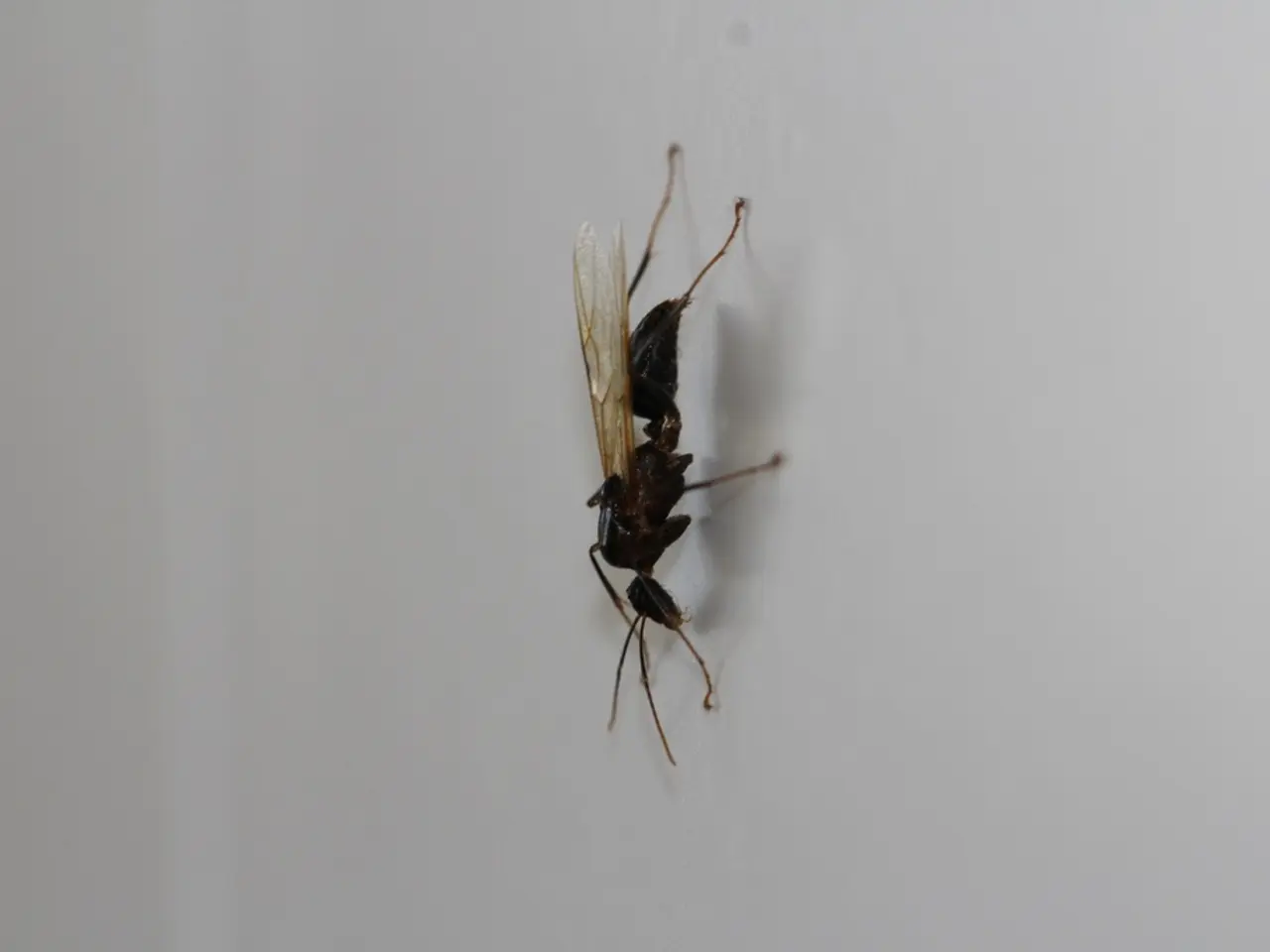Lithuanian border authorities failed to intercept the incoming drone from Belarus, according to the chief.
In the early hours of this morning, a suspected drone was detected over Lithuanian airspace, prompting a swift response from the country's authorities.
The population alert and information system was activated, and a message was sent throughout Lithuania shortly after 7 a.m. The object, initially suspected to be a Shahed drone, was later identified as Gerbera, a Russian-made drone designed to deceive air defenses.
Lithuania has implemented several specific measures to detect, intercept, and neutralize drones entering its airspace from Belarus. These measures include the redeployment of air defense units closer to the border, enhanced air defense vigilance, and the accelerated deployment of short- and medium-range multi-sensor radars.
Rustamas Liubajevas, commander of the State Border Guard Service (SBGS), stated that the SBGS has border surveillance systems, not airspace surveillance systems. If an object is detected by the SBGS, the information about it is handed over to relevant authorities, including the Defense Ministry, the Lithuanian Armed Forces, and the Air Force. All actions related to the entry of an object into Lithuanian airspace are further coordinated by the Air Force.
The Lithuanian Air Force claimed to have detected the object while it was still in Belarus and passed on the information to NATO's Combined Air Operations Center. Following the July 10 incident, additional army capabilities will be deployed closer to the Belarusian border.
Detecting and neutralizing drones is a problem for all agencies, not a single institution, according to Liubajevas. When drones are detected or crash, such as the Gerbera drones found near Šumskas and Gaižiūnai, Lithuanian military personnel recover them for forensic and intelligence analysis.
In critical cases, such as when an unidentified drone was spotted near Vilnius Airport, authorities suspended air traffic temporarily and increased patrols and monitoring to ensure safety. Following criticism of slow responses in some incidents, the Defense Ministry announced plans to revise rules of engagement to allow quicker authorization for shooting down suspicious drones.
Lithuania notified NATO of drone incursions to call for strengthened air defense capabilities on the alliance’s eastern flank, underscoring the geopolitical dimension of drone threats. Renatas Pozoela, director of the Fire and Rescue Department, rejects criticism that the population should have been warned about the potential danger earlier.
This is the second time this month that Lithuania has recorded a drone entering from Belarus. Residents reported hearing the sound of the drone as early as 5 a.m. on social media. According to Arunas Paulauskas, commissioner general of the Lithuanian Police, about 30 reports of UAV sightings were received, with the first report coming at 5.55 a.m. near Medininkai in Vilnius District.
Overall, Lithuania’s approach combines proximity deployment of defense units, advanced sensor systems, airspace monitoring, legal and procedural adjustments for interdiction, and international collaboration to detect, intercept, and neutralize incoming drones, mainly those believed to be Russian-made drones crossing from Belarus.
- The suspected Russian-made drone, identified as Gerbera, was initially detected in Lithuanian airspace, leading to a critical situation that required the collaboration of various institutions, including health, politics, war-and-conflicts, general-news, and crime-and-justice agencies, to ensure public safety.
- In response to increased drone threats, particularly those believed to be Russian-made, the Lithuanian government has implemented measures such as enhancing air defense systems, coordinating inter-agency responses, and collaborating with international allies, such as NATO, in politics and war-and-conflicts arenas.
- When an unidentified drone was detected near Vilnius Airport, not only the Defense Ministry but also the Fire and Rescue Department played a crucial role in temporarily suspending air traffic and increasing patrols and monitoring, demonstrating the multifaceted nature of the response required to address this issue across diverse sectors like health, crime-and-justice, and general-news.






